Having a beautiful deck is a great addition to any home and can provide the perfect spot for outdoor gatherings, relaxation, and enjoying nature. However, one common issue that many homeowners face with their decking is the presence of white residue or stains. This can be an eyesore and may make your deck look dull and unappealing. In this guide on how to get white residue off deck, we will discuss the causes of white residue on decking and provide some tips on how to get rid of it.
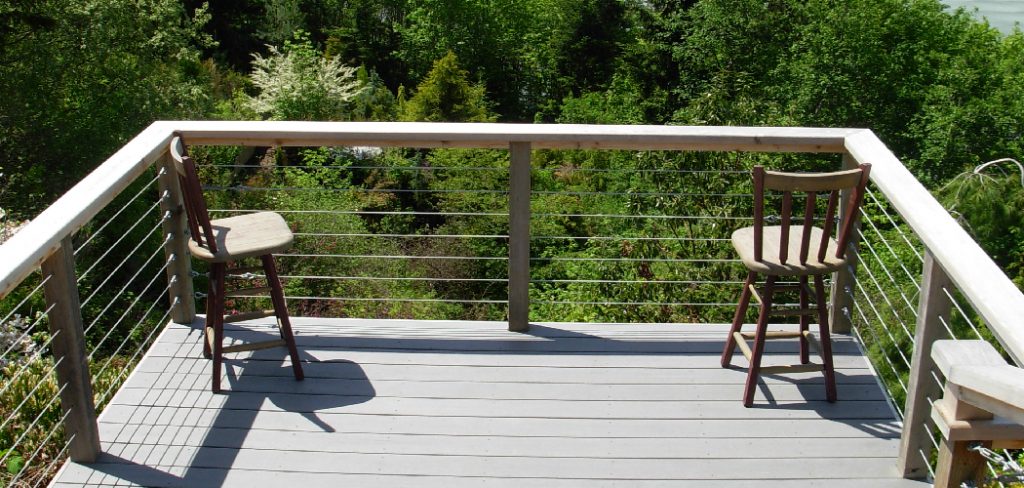
Necessary Items
Before we dive into the steps to remove white residue from the decking, it’s important to gather all the necessary items. You will need:
- Broom or brush
- Garden hose or pressure washer
- Deck cleaner (make sure it is safe for your type of decking)
- Scrub brush or sponge
- Bucket
- White vinegar or lemon juice (optional)
- Protective gear (gloves, goggles, etc.)
8 Causes of White Residue on Decking
There are a few reasons why white residue may appear on your decking. Understanding the cause can help you prevent it from happening in the future.
1) Mineral Deposits
If your water contains high levels of minerals such as calcium and magnesium, they may leave behind a white residue on your decking. And if you live in an area with hard water, this can be a common issue.
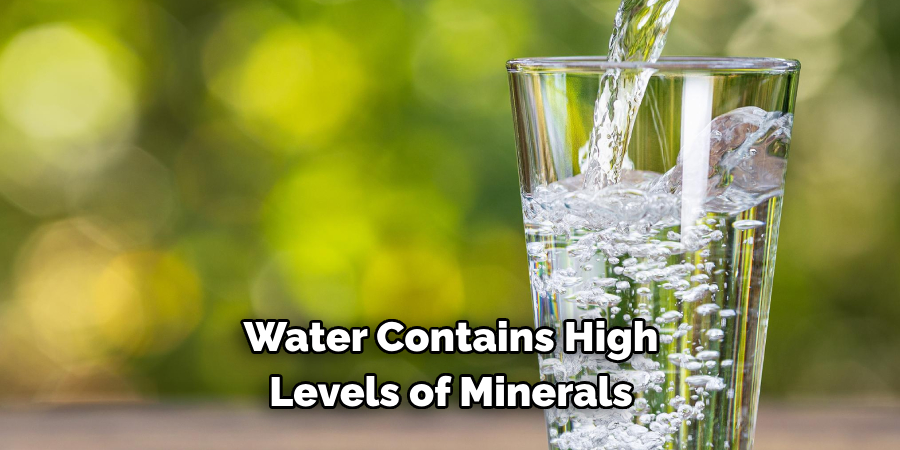
2) Salt Deposits
If you live near the ocean or use salt to de-ice your decking in the winter, salt deposits may build up and leave behind a white residue. Also, if you have a saltwater pool, splashes of water on your decking can contribute to this issue.
3) Chlorine from Pool Water
Chlorine is commonly used to keep pools clean and free of bacteria. However, if you have a pool near your deck, the chlorine fumes can cause a white residue to form on the surface. As the fumes rise and settle on your decking, they can react with the wood or stain, leaving behind a white film.
4) Fertilizer or Pesticides
If you have plants or gardens near your deck and use fertilizer or pesticides, some of these products may be carried by wind or rain onto your deck. Over time, this can cause the formation of white residue.
5) Mold or Mildew
Moisture and dampness can lead to the growth of mold or mildew on your decking, especially in shaded areas. As these organisms grow and spread, they may leave behind a white film on the surface.
6) Sunscreen or Tanning Products
If you frequently use sunscreen or tanning products while on your deck, some of these products may transfer onto the surface and cause a white residue to form. While these products are essential for protecting your skin, they can also contribute to the buildup of residue.

7) Pressure-Treated Wood
If your decking is made from pressure-treated wood, it may contain chemicals such as copper or zinc. As these chemicals leach out and come into contact with moisture or air, they can cause a white residue to form. This is especially common with newer decks.
8) Cleaning Products and Improper Maintenance
Using the wrong cleaning products or not properly maintaining your decking can also lead to the formation of white residue. For example, using harsh chemicals or a pressure washer with too much force can damage the surface of your decking and cause it to become dull and discolored.
Having white residue on your decking can be frustrating, but it is not impossible to get rid of. By identifying the cause and taking preventative measures, you can keep your deck looking clean and beautiful. And with proper maintenance, you can prevent white residue from forming in the future. So, gather your materials and follow these steps to restore the shine and appearance of your decking.
12 Steps on How to Get White Residue Off Deck
Step 1: Sweep or Brush off Any Debris
Before you begin the cleaning process, it’s important to remove any dirt, leaves, or other debris from your decking. This will help prevent further buildup of residue and make the cleaning process more effective.
Step 2: Wet the Decking
Using a garden hose or pressure washer on a low setting, wet down your deck surface. This will help loosen any residue and prepare the surface for cleaning. And if you live in an area with hard water, consider using a water softener to reduce mineral deposits.
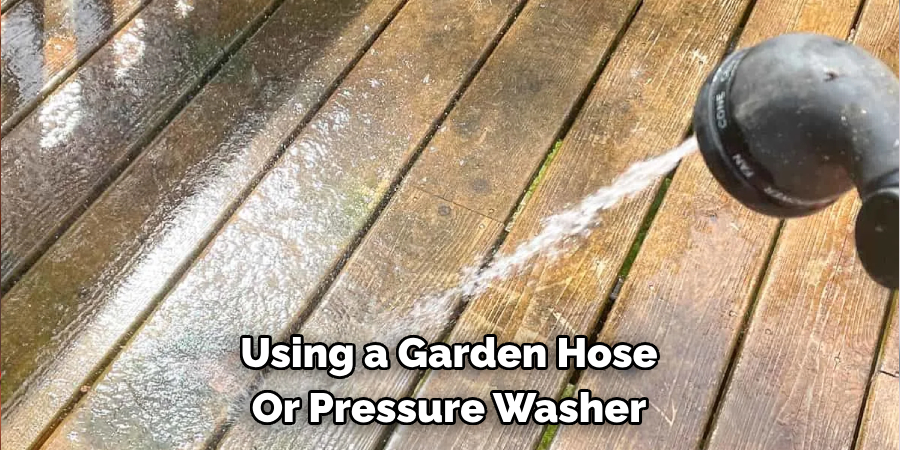
Step 3: Prepare Your Cleaning Solution
Follow the instructions on your deck cleaner to prepare the solution. If you prefer a natural option, mix equal parts white vinegar or lemon juice with warm water in a bucket. If using white vinegar, be sure to do a patch test first, as it may discolor certain types of decking.
Step 4: Apply the Cleaning Solution
Using a scrub brush or sponge, apply the cleaning solution to your deck surface. Be sure to work in small sections to avoid drying out the solution before you have a chance to scrub. Evenly coat the surface and focus on areas with heavy residue buildup.
Step 5: Scrub the Decking
Using a scrub brush or sponge, start scrubbing your deck in circular motions to loosen any residue. Be sure to pay extra attention to areas with stubborn stains or buildup. If using a pressure washer, be careful not to use too much force as it can damage the wood.
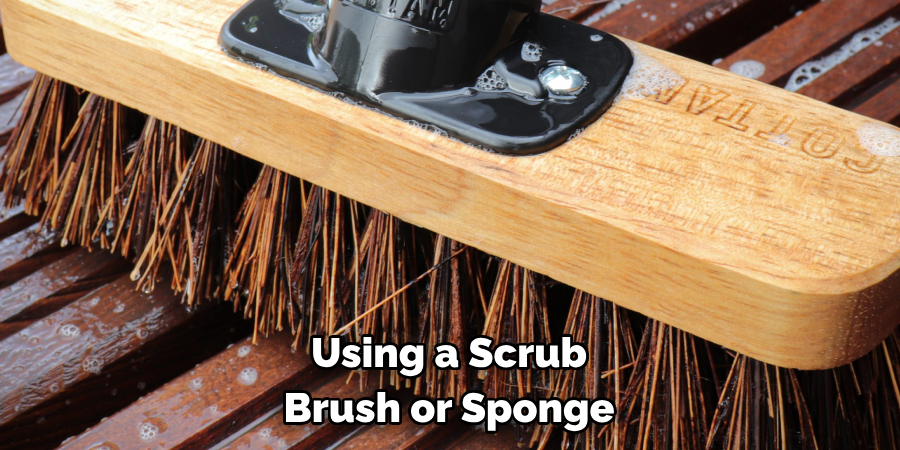
Step 6: Let it Sit
After scrubbing, let the cleaning solution sit on your decking surface for a few minutes. This will allow it to penetrate and break down any remaining residue. However, be sure not to let it dry out. So if your decking is in direct sunlight, move on to the next step immediately.
Step 7: Rinse Thoroughly
Using a garden hose or pressure washer on a low setting, thoroughly rinse off the cleaning solution. Be sure to remove all traces of the solution, as leaving it on can cause damage over time. As you rinse, you should notice the white residue starting to disappear.
Step 8: Repeat if Necessary
If there is still visible white residue after rinsing, repeat the process using a stronger concentration of your cleaning solution. Be sure to follow the instructions carefully and avoid using too much pressure or scrubbing too hard.
Step 9: Neutralize with Water
After rinsing off the cleaning solution, it’s important to neutralize the pH level of your decking. This will help prevent any damage or discoloration from occurring. Simply use a garden hose or pressure washer on a low setting to thoroughly rinse the surface with water.
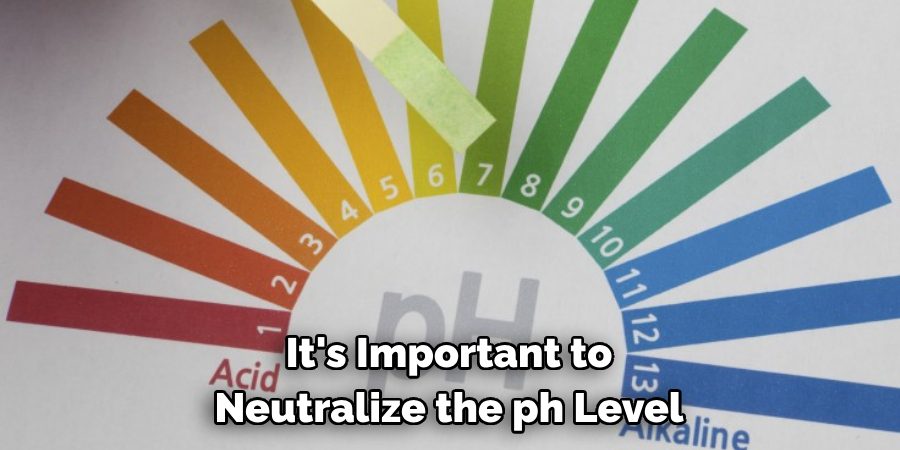
Step 10: Dry the Decking
Using a dry cloth or towel, wipe down your decking to remove any excess water. It’s important to dry the surface completely before proceeding to the next step.
Step 11: Apply a Sealant
Once your decking is dry, consider applying a sealant to protect it from future residue buildup. This will also help restore the shine and appearance of your decking. Do some research on the best type of sealant for your specific decking material.
Step 12: Regularly Clean and Maintain Your Decking
To prevent white residue from building up in the future, it’s important to regularly clean and maintain your decking. This includes sweeping off debris, rinsing with water after use, and using a suitable cleaning solution every few months. By keeping up with maintenance, you can keep your deck looking fresh and residue-free.
Overall, getting rid of white residue on your decking may take some time and effort, but with the right methods on how to get white residue off deck and proper maintenance, you can restore its appearance and keep it looking great for years to come. So don’t let white residue ruin your outdoor space – follow these steps and enjoy a clean and beautiful deck once again!
8 Things to Avoid to Prevent White Residue on Decking
1. Using Harsh Chemicals or Cleaners
As mentioned earlier, using harsh chemicals or cleaners can damage the surface of your decking and cause white residue to form. Stick to mild and gentle cleaning solutions specifically designed for use on decks.
2. Using a Pressure Washer with Excessive Force
While pressure washing can be an effective way to clean your deck, using too much force can strip away the protective layer of your deck and leave it susceptible to white residue buildup. Use a pressure washer on a low setting and keep the nozzle at a safe distance from the surface.
3. Not Properly Rinsing Off Cleaning Solutions
Leaving cleaning solutions on your deck without properly rinsing them off can lead to damage over time and cause white residue to form. Always make sure to thoroughly rinse off any cleaning solution with water after use.
4. Neglecting Regular Maintenance
Regularly sweeping off debris and giving your deck a quick rinse after use can help prevent white residue from forming in the first place. Don’t neglect these simple maintenance tasks to keep your decking looking clean and fresh.
5. Allowing Moisture to Accumulate
Moisture can contribute to the formation of white residue on decking. To prevent this, make sure your deck is properly ventilated, and any standing water is promptly removed. As mentioned earlier, using a water softener can also help reduce mineral deposits and prevent white residue.
6. Using Abrasive Scrubbing Tools
Using abrasive scrubbing tools can damage the surface of your decking and cause white residue to form. Stick to gentle scrub brushes or sponges when cleaning your deck. Soaking stubborn areas in a cleaning solution before scrubbing can also help loosen buildup without the need for excessive force.
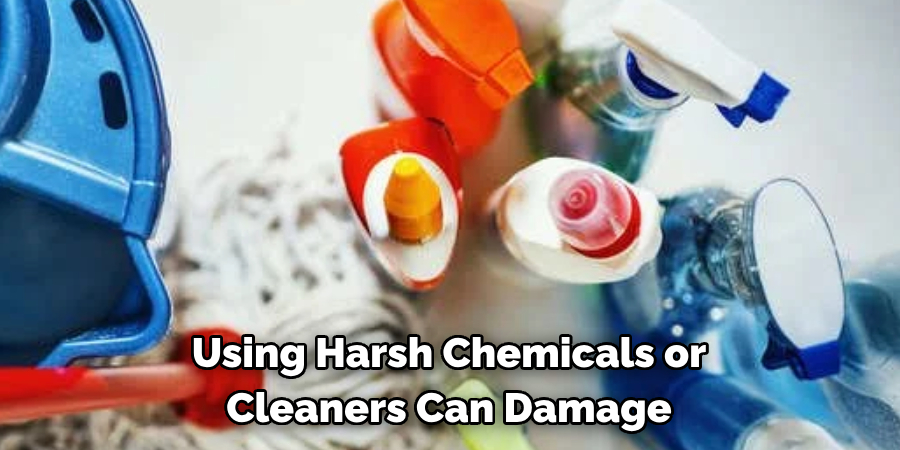
7. Not Following Instructions on Cleaning Products
Different types of decking may require different cleaning solutions and methods. It’s important to carefully read and follow the instructions on any cleaning products you use to avoid damage or white residue formation.
8. Ignoring Early Signs of White Residue
If you notice any signs of white residue on your decking, it’s important to address it as soon as possible. Ignoring it and allowing it to build up can make removal more difficult in the long run. Take action at the first sign of residue to keep your deck looking its best. So there you have it – a comprehensive guide on how to get rid of white residue on your decking and prevent it from coming back. By following these steps and avoiding certain mistakes, you can enjoy a clean and well-maintained deck for years to come.
8 Additional Tips for Maintaining a Clean Deck
1. Sweep Regularly
Sweeping your deck regularly can help prevent debris and dirt from building up and making it more difficult to clean in the future. Make it a part of your weekly cleaning routine. Even a quick sweep can make a big difference.
2. Remove Stains Immediately
If you spill something on your deck, don’t wait to clean it up. The longer a stain sits, the harder it will be to remove. Act fast and use a mild cleaning solution or water and soap to tackle any stains. But be careful not to use too much pressure or harsh chemicals.
3. Protect Your Deck Furniture
Placing furniture and items directly on your deck can scratch and damage the surface, making it more prone to white residue buildup. Consider using coasters or furniture pads to protect your deck from scratches.
4. Use a Grill Mat
If you regularly grill on your deck, consider using a grill mat to prevent any oils or grease from seeping into the wood and causing staining or residue buildup. Soak up spills and clean the mat regularly to prevent any buildup.
5. Keep Plants Away
While plants can add beauty to your deck, they can also contribute to staining and residue buildup. Make sure to keep potted plants off of your deck surface or use a saucer underneath them to catch any water runoff.
6. Address Mold and Mildew
If you notice any signs of mold or mildew on your deck, it’s important to address it immediately. These can not only cause damage to your decking but also contribute to white residue formation. Also, make sure to regularly clean and treat your deck with mildew and mold inhibitors.
7. Be Mindful of Seasonal Changes
Different seasons can affect the condition of your decking. In the fall, leaves and debris may accumulate more frequently and require extra cleaning. In the winter, snow buildup may require removal to prevent moisture damage. Stay mindful of these changes and adjust your maintenance routine accordingly.
8. Regularly Inspect for Damage
Regularly inspecting your deck for any signs of damage can help prevent small issues from turning into bigger problems. Look out for rotting wood, loose boards, or signs of insect infestation. Address these issues promptly to keep your deck in good condition.
So, there you have some additional tips to help you maintain a clean and well-kept deck. By following these steps on how to get the white residue off deck and staying proactive in your maintenance, you can enjoy beautiful and long-lasting decking for years to come. Keep these tips in mind, and your deck will be the envy of all your neighbors!
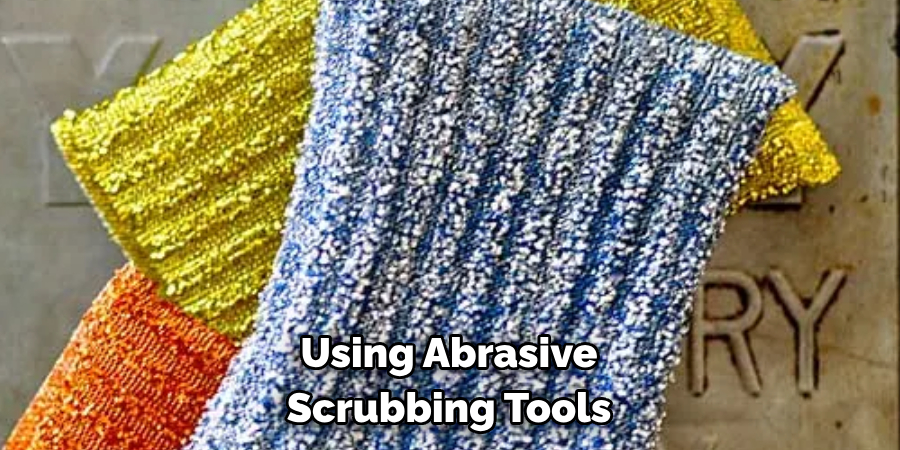
Frequently Asked Questions
Can I Use Bleach to Clean My Deck?
It’s not recommended to use bleach on your deck as it can cause damage and discoloration. Stick to mild cleaning solutions or water and soap.
How Often Should I Clean My Deck?
It’s recommended to clean your deck at least once a year, but it may require more frequent cleaning depending on factors such as weather and usage. Regular sweeping and quick rinses after use can also help prevent buildup.
Will Pressure Washing Damage My Deck?
If not done properly, pressure washing can damage your deck. Make sure to use the appropriate pressure setting and keep a safe distance from the surface. It’s also recommended to use a soft brush or sponge for stubborn areas instead of relying solely on pressure washing. Remember to always test a small, inconspicuous area first before using any cleaning methods on your entire deck.
Should I Seal My Deck?
Sealing your deck can help protect it from moisture and sun damage, as well as prevent staining and residue buildup. Depending on the type of wood and climate, it’s recommended that you seal your deck every 1-3 years.
What Should I Do If I Notice White Residue After Cleaning My Deck?
If you notice white residue after cleaning your deck, it may be a sign that there is still mineral buildup on the surface. You may need to repeat the cleaning process or consider using a professional cleaner for tougher residue. It’s also important to check for any underlying issues, such as mineral deposits in your water source, that may be contributing to the buildup. Regular maintenance and proper cleaning methods can help prevent this issue from recurring in the future.
Conclusion
A clean and well-maintained deck can add beauty and value to your home. By regularly cleaning and following these tips on how to get white residue off deck, you can prevent white residue buildup and keep your deck looking its best for years to come. Remember to always use caution when cleaning your deck and follow the instructions on any products used. So there you have it – everything you need to know about preventing and removing white residue on your decking.
About the Author
Adrian Green, a lifelong woodworking enthusiast, shares his passion for the craft through The Woodenify Blog. With a foundation built on years of hands-on experience in his father’s woodworking shop, Adrian is dedicated to helping others learn and grow in the world of DIY woodworking. His approach to woodworking combines creativity, practicality, and a deep appreciation for the art of building with your own hands. Through his blog, he inspires individuals of all skill levels to embark on their own woodworking journeys, creating beautiful, functional pieces of furniture and décor.
Professional Focus
- Specializes in DIY woodworking projects, from furniture to home décor.
- Provides step-by-step guides and practical tutorials for woodworkers of all skill levels.
- Dedicated to helping readers build confidence and skill through easy-to-follow instructions and tips.
- Passionate about fostering a community of makers who can share, learn, and grow together.
Education History
- University of Craft and Design – Bachelor of Fine Arts (BFA) in Woodworking and Furniture Design
- Woodworking Apprenticeships – Extensive hands-on training with skilled craftsmen to refine carpentry and furniture making techniques.
- Online Courses & Masterclasses – Continued education in advanced woodworking techniques, design principles, and specialized tools
Expertise:
- DIY woodworking, carpentry, furniture making, and home décor projects.
- Creating accessible tutorials and guides for beginner to advanced woodworkers.
- Sharing the joys and satisfaction of woodworking, from raw materials to finished products.
